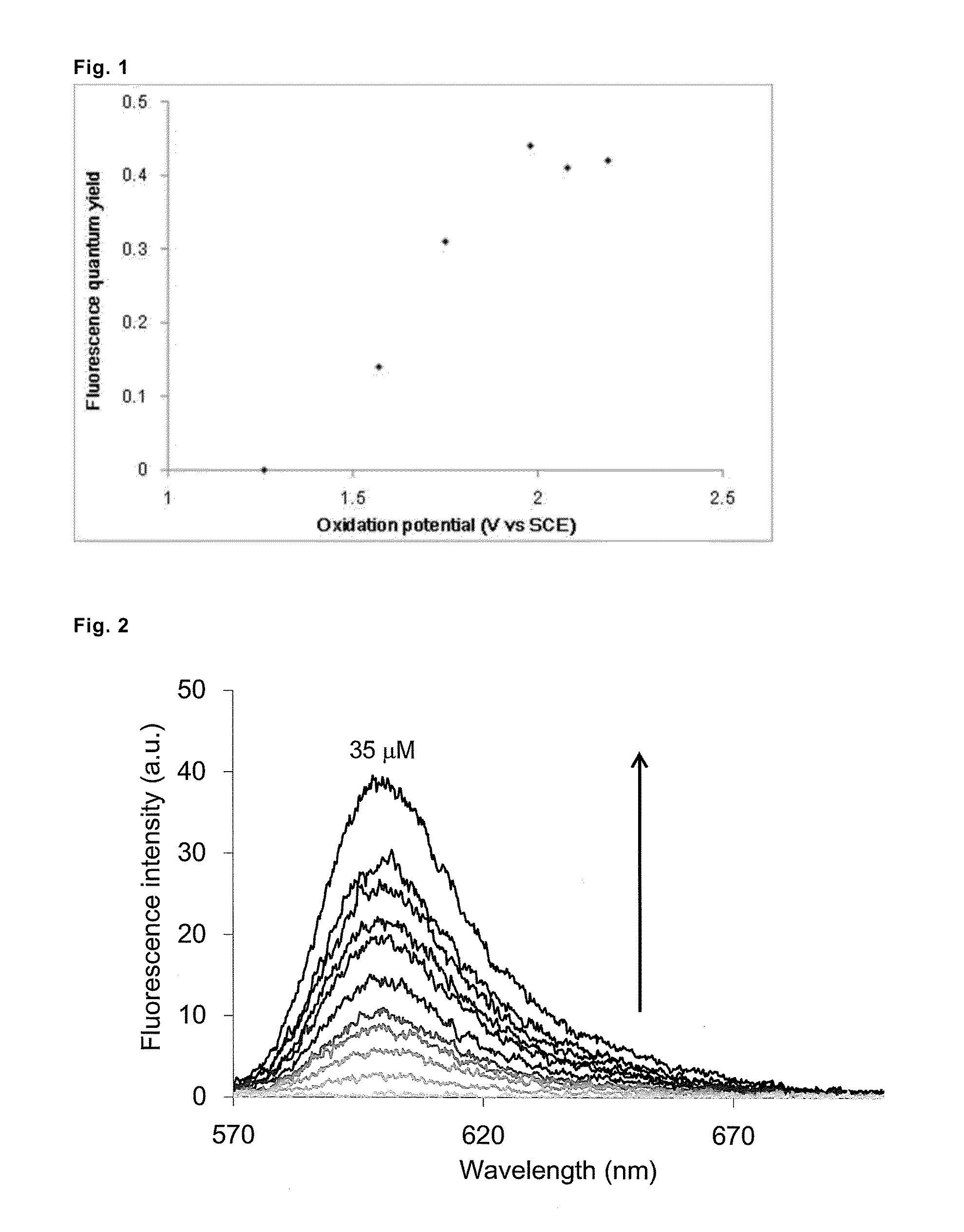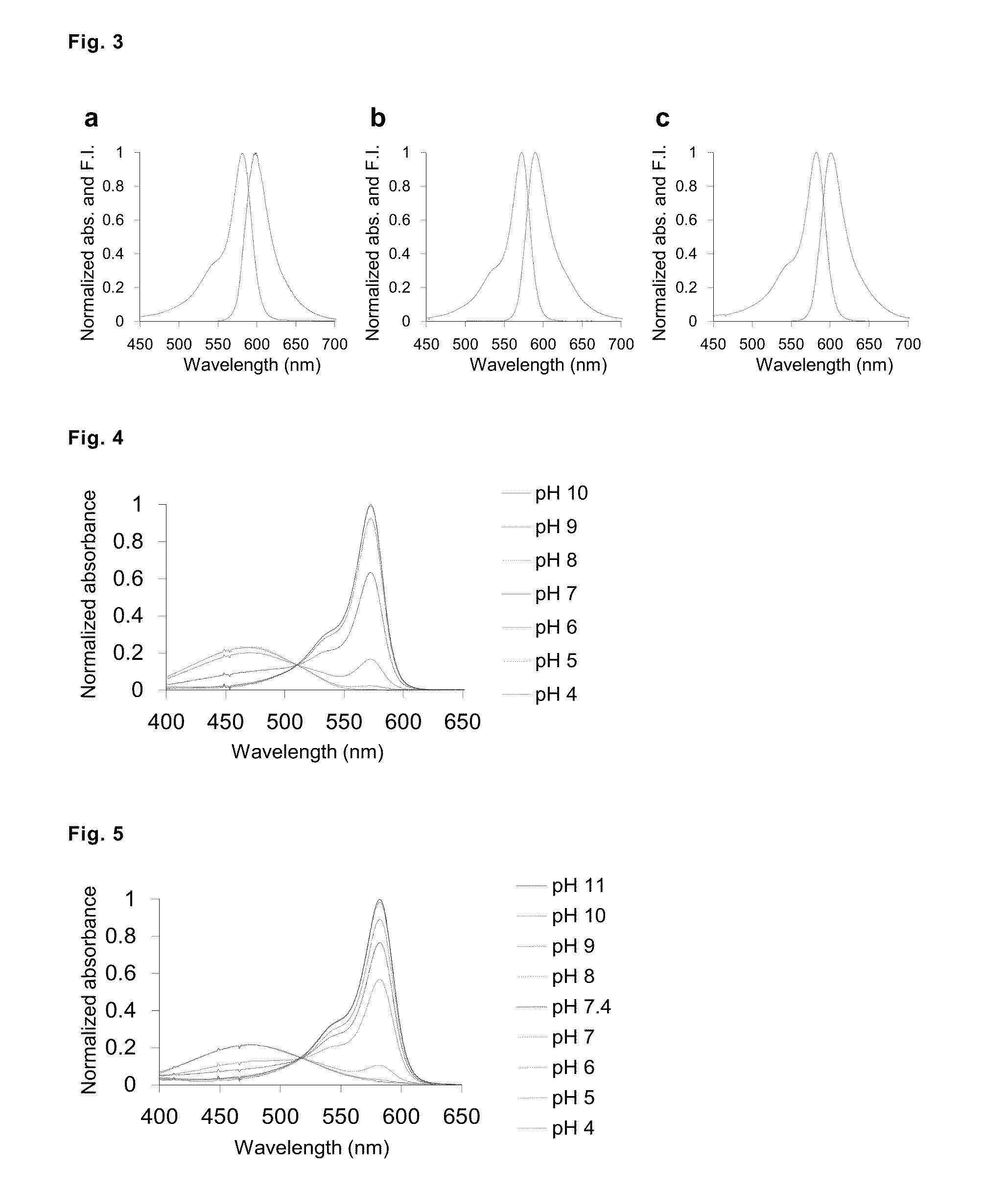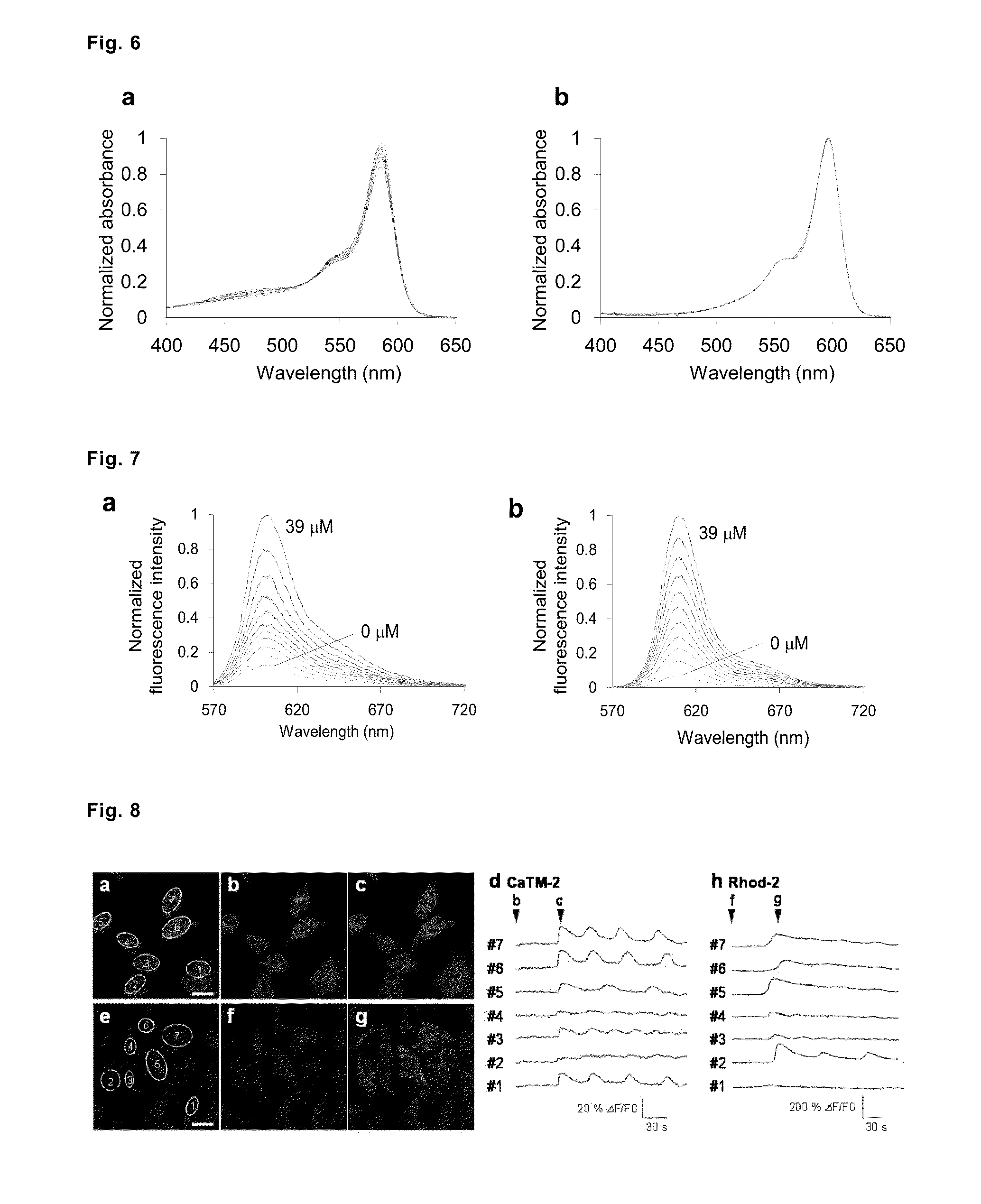Fluorescent probe
a fluorescent probe and probe body technology, applied in the field of fluorescence probes, can solve the problems of almost no reports and become cationic, and achieve the effect of high intensity and highly sensitive measurement of ph
- Summary
- Abstract
- Description
- Claims
- Application Information
AI Technical Summary
Benefits of technology
Problems solved by technology
Method used
Image
Examples
example 1
Reference Example
[0104]The compound in which methyl group was introduced as R1 on the benzene ring was synthesized according to the following scheme.
[0105]
(1) Step (a)
[0106]Potassium carbonate (22.0 g, 159 mmol) was suspended in acetonitrile, 3-bromoaniline (8.71 mL, 80.0 mmol) and allyl bromide (23.7 mL, 280 mmol) were added to the suspension, and the mixture was stirred at 80° C. for 14 hours. The reaction mixture was cooled to room temperature, then filtered through Celite, and sufficiently washed with ethyl acetate. The solvent was removed, and then the residue was purified by column chromatography (silica gel, ethyl acetate / hexane (1 / 40)) to obtain 3-bromo-N,N-diallylaniline (17.1 g, 67.9 mmol, yield 85%).
[0107]1H-NMR (300.40 MHz, CDCl3): δ 3.87-3.90 (m, 4H), 5.11-5.15 (m, 2H), 5.17-5.18 (m, 2H), 5.75-5.88 (m, 2H), 6.58 (dd, 1H, J=2.2, 8.1 Hz), 6.77-6.81 (m, 2H), 7.01 (t, 1H, J=8.1 Hz)
[0108]13C-NMR (75.45 MHz, CDCl3): δ 52.7, 110.8, 115.0, 116.3, 119.0, 123.3, 130.2, 133.2, 150...
example 2
Reference Example
[0133]By using 3,6-di-tert-butyldimethylsilyloxy-Si-xanthone obtained in Example 1, the step (6), Compounds (a) to (e) were synthesized by the following procedures.
[0134]A bromobenzene derivative (1.0 mmol) and anhydrous tetrahydrofuran (THF, 5 mL) were added to a sufficiently dried flask under an argon atmosphere. The mixture was cooled to −78° C., and then 1 M sec-butyllithium (0.5 mmol) was added thereto, and the mixture was stirred for 20 minutes. 3,6-Di-tert-butyldimethylsilyloxy-Si-xanthone (0.015 to 0.019 mmol) dissolved in anhydrous THF (5 mL) was slowly added to the mixture at the same temperature, and the mixture was brought to room temperature. The mixture was stirred at room temperature for 1 hour, and then 2 N hydrochloric acid (5 mL) was added thereto, and the mixture was stirred for 20 minutes. The reaction mixture was extracted with dichloromethane, and the organic layer was washed with brine, and dried over anhydrous sodium sulfate. The solvent was ...
example 3
Synthesis of Calcium Fluorescent Probe
[0153]
[0154]A bromobenzene derivative (192 mg, 0.242 mmol) and anhydrous THF (20 mL) were added to a sufficiently dried flask under an argon atmosphere. The mixture was cooled to −78° C., and then 1 M sec-butyllithium (1 mmol) was added thereto, and the mixture was stirred for 15 minutes. 3,6-Di-tert-butyldimethylsilyloxy-Si-xanthone (69.9 mg, 0.140 mmol) dissolved in anhydrous THF (5 mL) was slowly added to the mixture at the same temperature, and the mixture was brought to room temperature. The mixture was stirred at room temperature for 1 hour, and then 2 N hydrochloric acid (5 mL) was added thereto, and the mixture was stirred for 20 minutes. The reaction mixture was extracted with dichloromethane, and the organic layer was washed with brine, and dried over anhydrous sodium sulfate. The solvent was removed, then the Trifluoroacetic acid (1 mL) was added to the residue, and the mixture was stirred overnight. This reaction mixture was purified...
PUM
| Property | Measurement | Unit |
|---|---|---|
| excitation wavelengths | aaaaa | aaaaa |
| excitation wavelengths | aaaaa | aaaaa |
| fluorescence wavelength | aaaaa | aaaaa |
Abstract
Description
Claims
Application Information
 Login to View More
Login to View More - R&D
- Intellectual Property
- Life Sciences
- Materials
- Tech Scout
- Unparalleled Data Quality
- Higher Quality Content
- 60% Fewer Hallucinations
Browse by: Latest US Patents, China's latest patents, Technical Efficacy Thesaurus, Application Domain, Technology Topic, Popular Technical Reports.
© 2025 PatSnap. All rights reserved.Legal|Privacy policy|Modern Slavery Act Transparency Statement|Sitemap|About US| Contact US: help@patsnap.com



